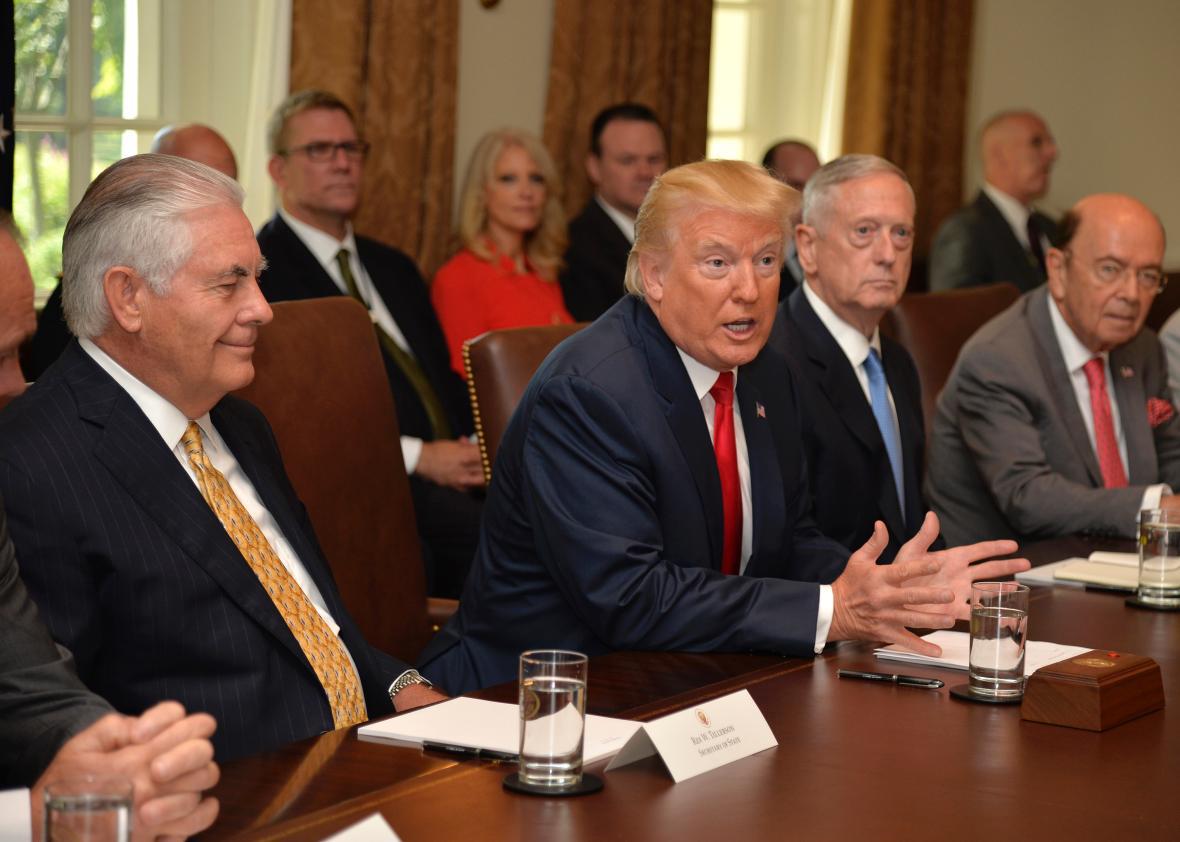Over the past week, there’s been a strange disconnect between the president’s escalating warnings to North Korea and the relative nonchalance of the U.S. national security establishment. While Trump threatened “fire and fury” and “things … like they never thought possible,” the people who would actually carry out an attack on North Korea don’t seem to be preparing to do so.
Trump’s national security team has been playing down tensions. National Security Adviser H.R. McMaster said over the weekend that “we’re not closer to war than a week ago, but we are closer to war than we were a decade ago.” CIA Director Mike Pompeo said of the notion that the U.S. and North Korea are on the verge of nuclear war, “I’ve seen no intelligence that would indicate that we’re in that place today.” And in a Sunday Wall Street Journal op-ed, co-authors Secretary of State Rex Tillerson and Secretary of Defense James Mattis called for applying “diplomatic and economic pressure” in cooperation with the international community to hold Pyongyang to account, more or less an intensification of long-standing practice.
More crucially, despite Trump’s insistence that military solutions are “locked and loaded,” the actual U.S. military doesn’t appear to be making any preparations for combat, as Defense News’ David Larter reported over the weekend:
In Yokosuka, Japan, the U.S. Navy’s forward-deployed ready aircraft carrier USS Ronald Reagan sits peacefully pier-side, along with the U.S. 7th Fleet command ship Blue Ridge. On the Korean Peninsula, the State Department has not advised American citizens to leave the country and U.S. military family members are not being evacuated. No Marines are being loaded on amphibious ships; no sailors have been recalled off leave to prepare for emergency operations; and no ballistic missile defense ships have been sortied to North Korea, the waters off Japan or to Guam, three sources said.
This is not the first time Trump has threatened military force without actually checking with the military first. Military commanders have openly stated that they don’t consider Trump’s Twitter statements official policy—a state of affairs that is somehow reassuring and terrifying at the same time.
Also in that category is the suggestion in a story by the AP on Monday that tensions between the U.S. and North Korea could subside a bit this week because “Events closer to home, including deadly violence at a white nationalist rally in Virginia, could demand more of President Donald Trump’s attention in the days ahead and cut into the volume and frequency of his fiery North Korea rhetoric.” This suggests that the level of tension in the Korean peninsula is directly correlated to how much the president is paying attention to it.
For now, it seems the the notion that the U.S. is about to go to war with North Korea is mostly in Trump’s head, but North Korea’s increasing nuclear capabilities are real, as are the thousands of artillery cannons that could rain down 300,000 rounds on South Korea in the first hour of war. Trump’s statements may only notionally represent foreign and military policy, but the safety of people from Seoul to Guam depends on the government of North Korea understanding that.
